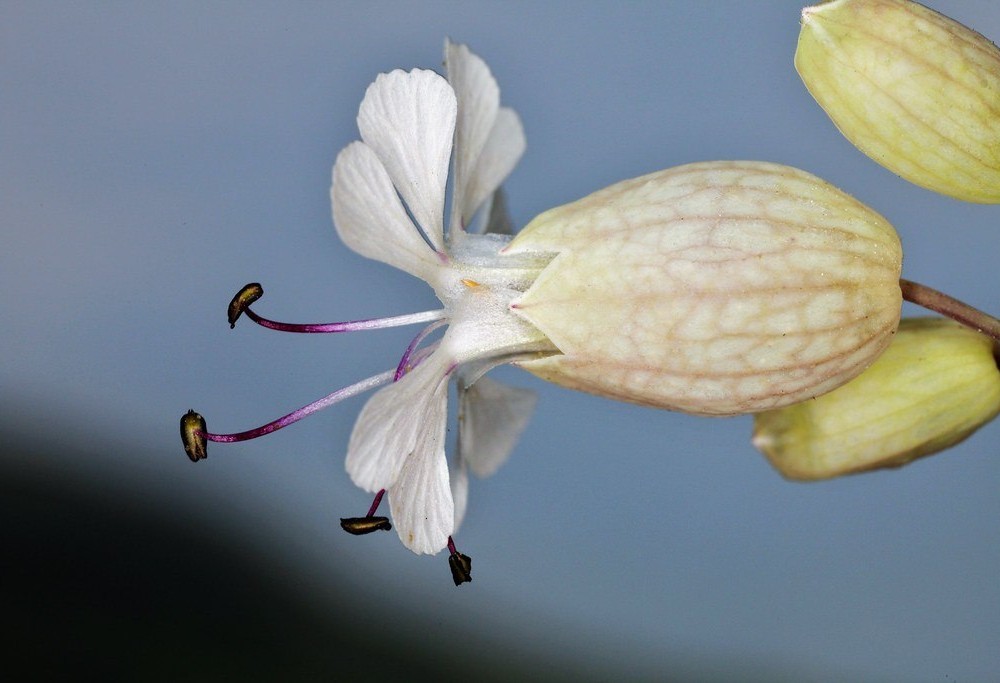Bladder campion
(Silene vulgaris vulgaris)

Description
Silene vulgaris vulgaris, commonly known as bladder campion, is a flowering plant belonging to the family Caryophyllaceae. This species is native to Europe, and it has been naturalized in other parts of the world such as North America, Asia, and Africa. It is a hardy plant that can tolerate various environmental conditions, and it is commonly found in grasslands, meadows, and along roadsides. Physical Description: Bladder campion is a herbaceous perennial plant that can grow up to 1 meter in height. It has a deep taproot that allows it to survive drought and other unfavorable conditions. The stems are green and have a slightly hairy texture. The leaves are ovate or lanceolate, and they are also slightly hairy. The flowers are white or pale pink, and they are approximately 2 centimeters in diameter. The petals are deeply notched, and they give the flower a star-shaped appearance. The flowers bloom from May to August, and they are followed by a capsule that contains numerous small seeds. Distribution and Habitat: Bladder campion is native to Europe, and it is found in most parts of the continent. It has been introduced to other parts of the world, including North America, Asia, and Africa. In these regions, it is considered an invasive species, as it can outcompete native plants and disrupt ecosystems. Bladder campion is a hardy plant that can tolerate various environmental conditions. It is commonly found in grasslands, meadows, and along roadsides. It prefers well-drained soils and can grow in full sun or partial shade. Ecological Importance: Bladder campion is an important plant in many ecosystems. It provides food and habitat for a variety of insects, including bees, butterflies, and moths. The flowers are particularly attractive to bees, which use the nectar as a source of energy. The plant is also a host to several species of moths, which lay their eggs on the leaves. The larvae then feed on the leaves, providing a source of food for birds and other animals. Bladder campion is also used as a medicinal plant in traditional medicine. The plant has been used to treat a variety of ailments, including respiratory infections, digestive problems, and skin conditions. The active compounds in the plant are saponins, which have anti-inflammatory and antimicrobial properties. Cultural Significance: Bladder campion has been used for centuries in traditional medicine and as a food source. The young leaves and shoots can be eaten raw or cooked, and they are a good source of vitamins and minerals. The plant has also been used in folk medicine to treat a variety of ailments, including coughs, colds, and digestive problems. In some cultures, bladder campion has spiritual significance. In Finnish mythology, the plant is associated with the goddess Mielikki, who is the protector of forests and animals. In Irish folklore, the plant is associated with the fairy folk, who use it as a magical herb. Conclusion: Silene vulgaris vulgaris, or bladder campion, is a hardy and versatile plant that has ecological and cultural significance. It provides food and habitat for a variety of insects and animals, and it has been used for centuries in traditional medicine and as a food source. Despite its benefits, bladder campion can also be invasive in some regions, and it is important to manage its growth to prevent disruption to ecosystems.
Taxonomic tree:







